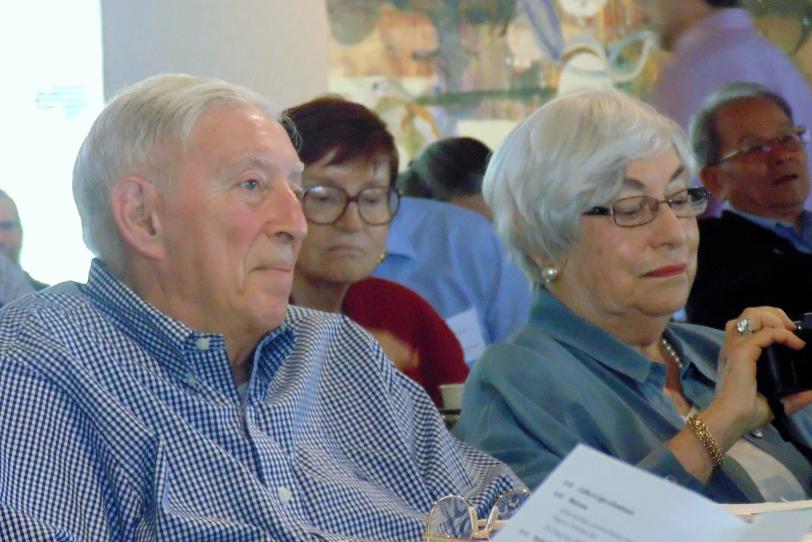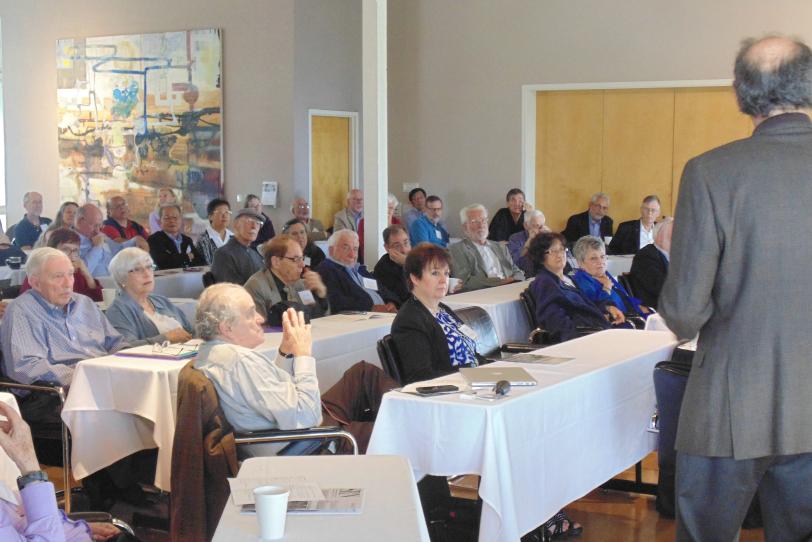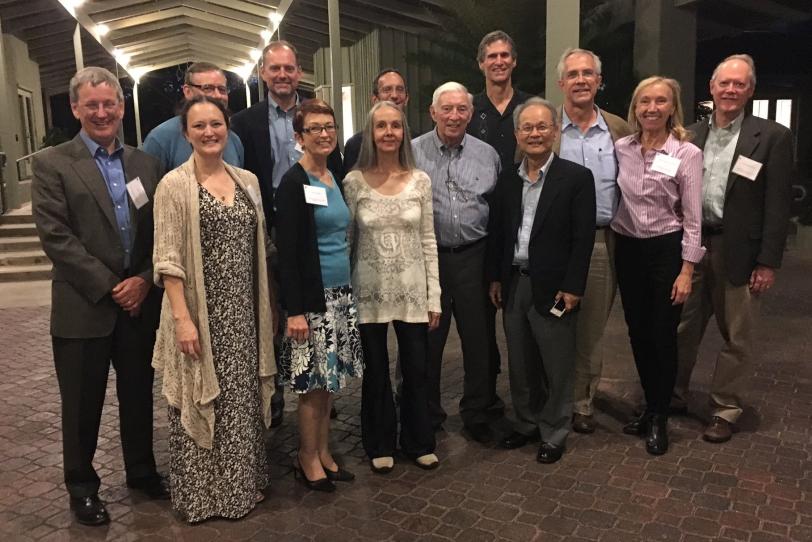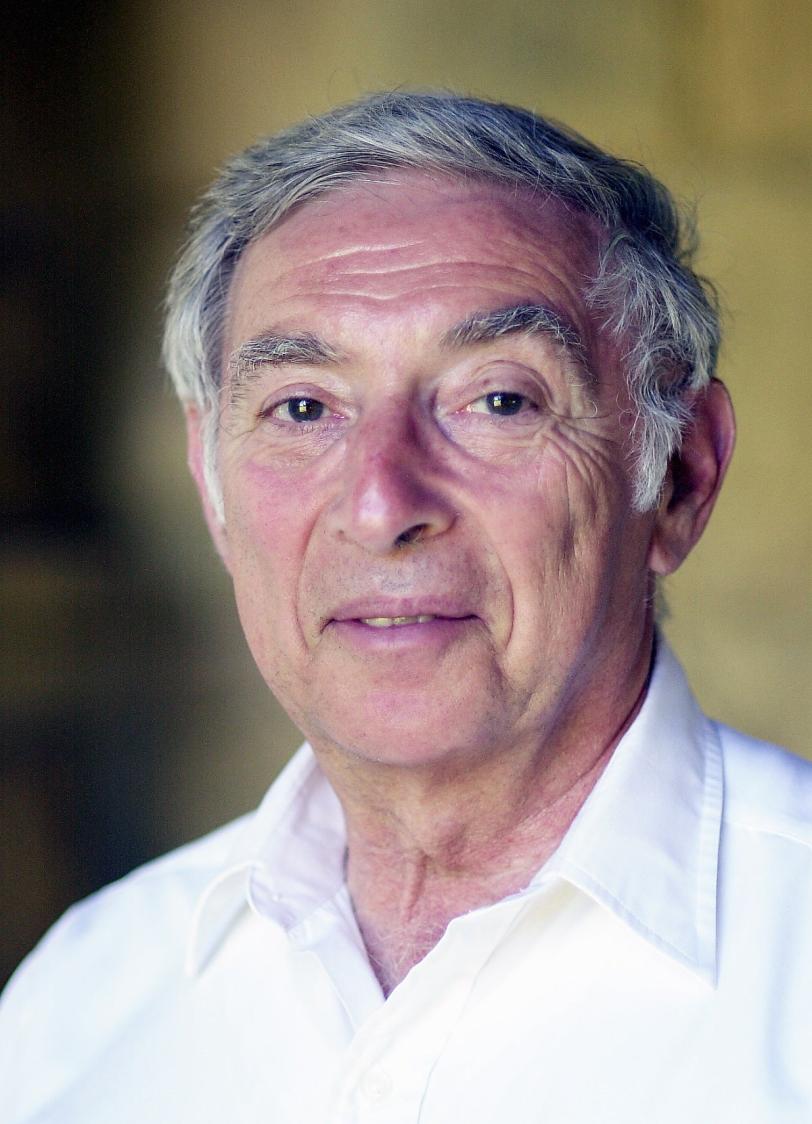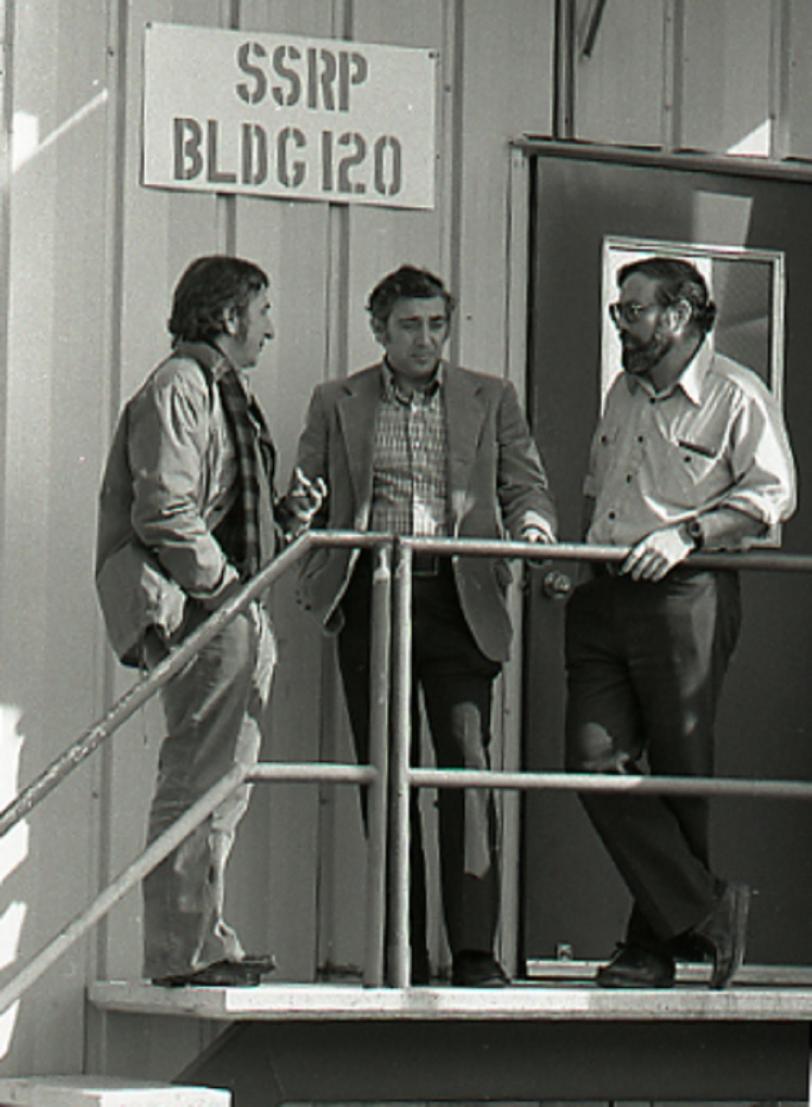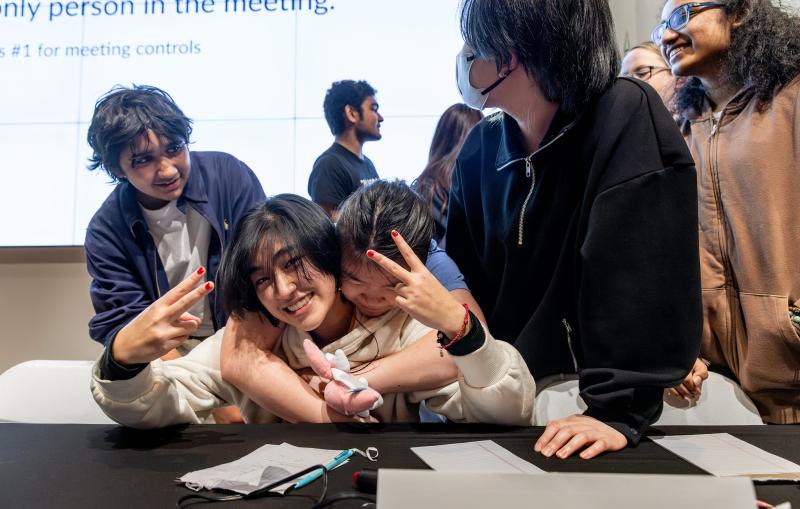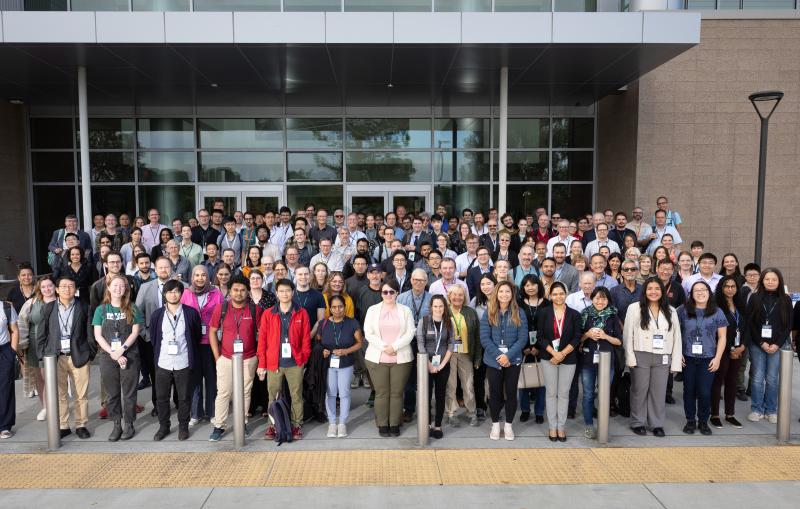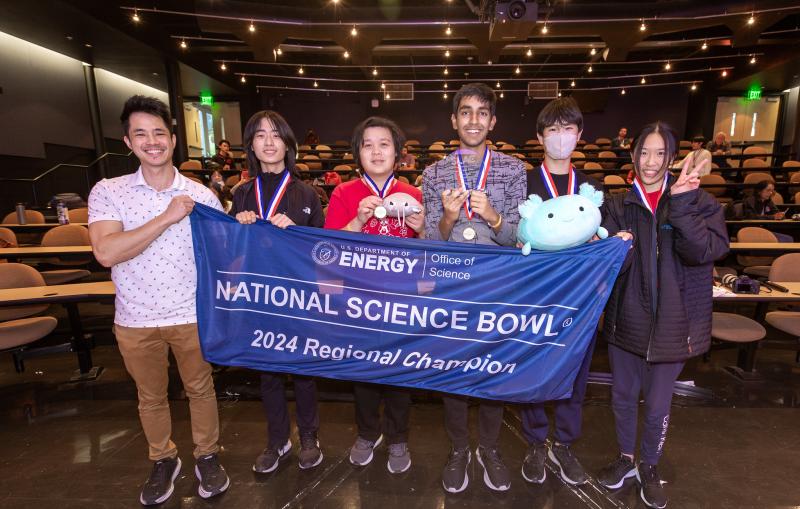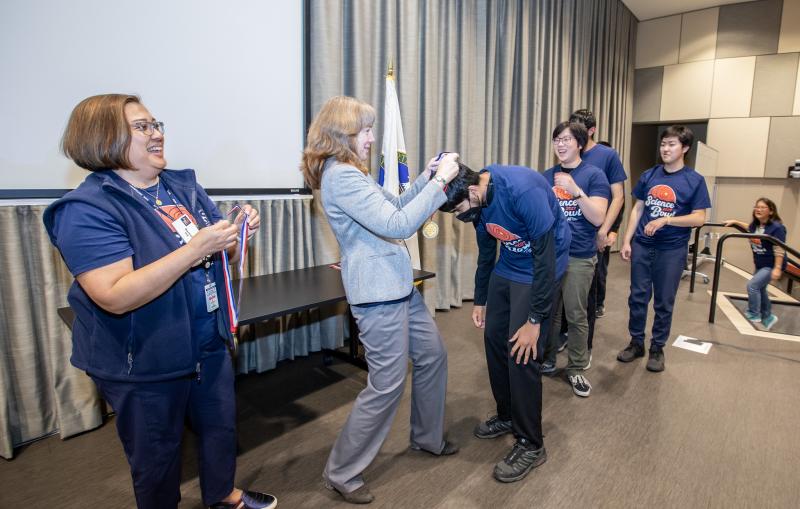Stanford and SLAC Celebrate Arthur Bienenstock
Symposium Honors Pioneer of Synchrotron Radiation and His Many Contributions to Science, Education and Science Policy
Arthur “Artie” Bienenstock, professor emeritus at Stanford University and the Department of Energy’s SLAC National Accelerator Laboratory, was honored with an all-day symposium in recognition of his outstanding contributions to science, academia, graduate student education and U.S. science policy.
In the more than 50 years of his career, Bienenstock has held a variety of positions, many at Stanford and SLAC, and also served as a policymaker in Washington, D.C., under the Clinton administration.
About 100 guests attended the Oct. 10 “Celebrating Artie Bienenstock” event in Menlo Park, whose organization committee included SLAC’s Stanford Synchrotron Radiation Lightsource (SSRL), a DOE Office of Science User Facility. It was supported by Stanford’s Department of Applied Physics and Department of Materials Science and Engineering. In invited talks and informal contributions, many of Bienenstock’s close companions lauded in unison his positive impact on their lives and the scientific community in general.
“SLAC wouldn’t be the lab it is today if it weren’t for Artie,” said SLAC Director Chi-Chang Kao. “He had a tremendous impact on the development of X-ray science, which has become one of the lab’s main research areas over the years.”
Driven by Finding Answers to the Unknown
Bienenstock received bachelor’s and master’s degrees in physics from the Polytechnic Institute of Brooklyn and a doctorate in applied physics from Harvard University in 1962.
After a postdoc in England and an assistant professorship at Harvard, Bienenstock came to Stanford in 1967, where he has served as professor of applied physics, of materials science and engineering, and of photon science at SLAC. He was Stanford’s vice provost for faculty affairs from 1972 to 1977 and vice provost and dean of research and graduate policy from 2003 to 2006. At SLAC, he led SSRL from 1978 to 1997 and was associate laboratory director for six of those years.
Bienenstock pursued a variety of research projects in his career, both in theory and experiments. “Since I started research, I knew that I wanted to solve problems that no one had the answer for,” he said. “That grabbed me and has stayed with me all my life.”
A particular emphasis of Bienenstock’s research has been the development of new methods to study the inner structure of amorphous materials – solids whose atoms are not arranged in an ordered way. Amorphous materials are used in flat-panel displays, solar cells, optical memories, batteries for hybrid cars and more.
Pioneer of X-ray Science with Synchrotrons
The structure of these materials is best studied with X-rays, and Bienenstock was one of the pioneers who began in the early 1970s to use the X-ray component of so-called synchrotron radiation for materials science. These groundbreaking studies were conducted at SLAC’s particle storage ring SPEAR, which was built for particle physics experiments but emitted synchrotron radiation as a byproduct.
“The amazing capabilities of synchrotron radiation sources have led to a paradigm shift in how we study materials,” said Columbia University’s Peter Eisenberger, who worked with Bienenstock on the early experiments. “Today, these sources are 100 million million million times brighter than conventional X-ray tubes and have become the ultimate source to see what’s going on in the world. Many of these developments took place under Artie’s leadership, when he was director of SSRL.”
Bienenstock kept pushing for better and better storage rings, X-ray optics and detectors, advancing the field of synchrotron radiation research, and was also a strong advocate for the development of SLAC’s X-ray laser, the Linac Coherent Light Source (LCLS), a DOE Office of Science User Facility.
Diplomatic Skills, Scientific Vision and Generosity of Spirit
From 1997 to 2001, Bienenstock went on leave from Stanford to become associate director for science in the White House Office of Science and Technology Policy.
“It took a person with Artie’s diplomatic skills, scientific vision and generosity of spirit to be successful in this role,” said Pennsylvania State University’s Martha Krebs, who was assistant secretary and director of the Office of Science at the DOE at the time. “You could tell that Artie deeply cared about making things possible.”
These qualities were also cherished by people who collaborated with Bienenstock in his other roles – for instance, when he was the chair of the panel on public affairs of the American Physical Society in 2004 and the society’s president in 2008. Since 2012, Bienenstock has helped develop national policies for the promotion of research and education in science and engineering as a member of the National Science Board.
Fostering Collaborations, Student Careers and Diversity
On his return to Stanford, Bienenstock became the director of the Geballe Laboratory for Advanced Materials (GLAM), an independent lab that supports the interdisciplinary research activities of more than 30 faculty members.
“Artie was one of the first to realize the benefits of a close collaboration between SLAC and Stanford and the big impact it would have on materials science,” said SLAC and Stanford Professor Zhi-Xun Shen, who is SLAC’s advisor for science and technology. “Today, about half of GLAM’s activities overlap with SLAC.”
On a more personal note, Shen and others praised Bienenstock as a mentor and friend – for his continued support, the sense of family he created in his research group, and his many ways of positively influencing graduate students, guiding many of them toward their own successful careers.
The symposium also recognized Bienenstock’s strong commitment to promoting diversity and supporting women and minorities in science.
For the past seven years, Bienenstock has led the Wallenberg Research Link at Stanford, which facilitates collaborations between Stanford and Swedish individuals and groups from academia, industry and government.
Internationally Recognized
Bienenstock is a fellow of the American Physical Society, the Institute of Physics, the American Association for the Advancement of Science and the California Council of Science and Technology, and a foreign member of the Swedish Royal Academy of Engineering Sciences.
He has received numerous national and international prizes and honors. The most recent one was bestowed on him at a March 20 celebration of his 80th birthday, when Stanford and SLAC announced the establishment of the Wallenberg-Bienenstock Professorship, reserved specifically for joint appointments between the university and the lab.
“In hindsight, I just followed opportunities that opened up and pursued those that looked worth doing,” Bienenstock said in his humble manner about his rich career path. “It seems to be the story of my life that I naively walk into new areas for which I’m unprepared. I was fortunate enough to be supported by so many great people around me, and together we did some very good things.”
For questions or comments, contact the SLAC Office of Communications at communications@slac.stanford.edu.
SLAC is a multi-program laboratory exploring frontier questions in photon science, astrophysics, particle physics and accelerator research. Located in Menlo Park, Calif., SLAC is operated by Stanford University for the U.S. Department of Energy's Office of Science.
SLAC National Accelerator Laboratory is supported by the Office of Science of the U.S. Department of Energy. The Office of Science is the single largest supporter of basic research in the physical sciences in the United States, and is working to address some of the most pressing challenges of our time. For more information, please visit science.energy.gov.
